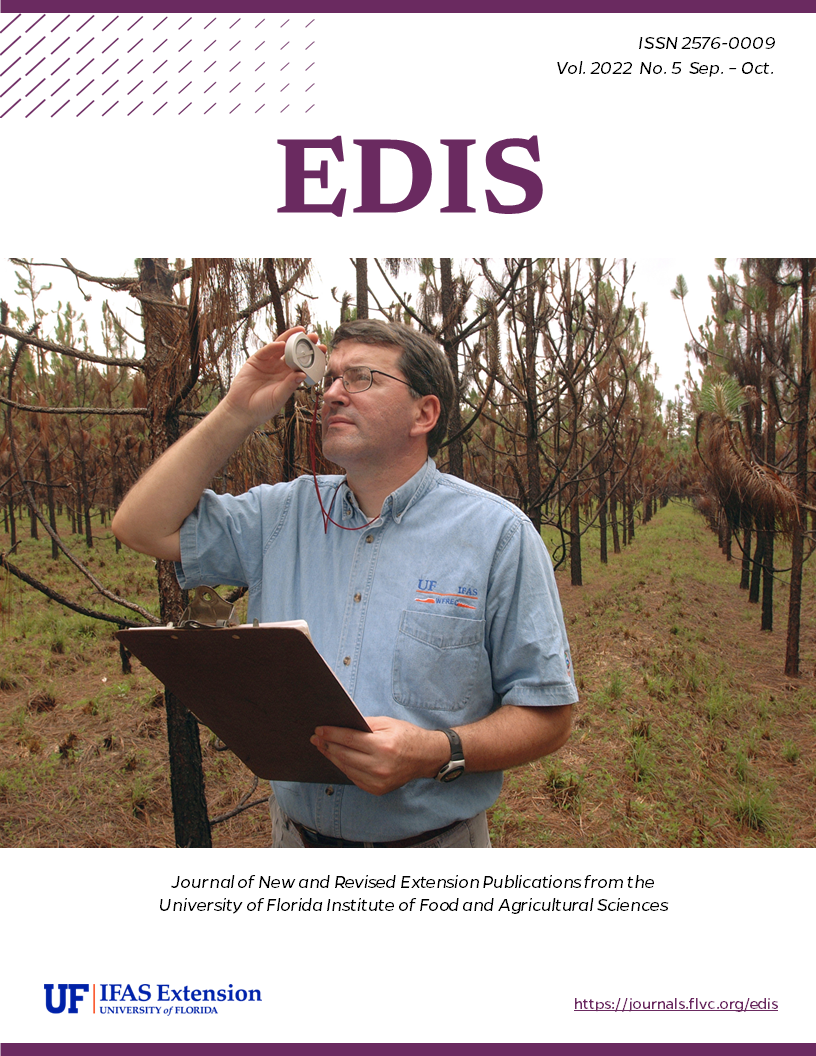References
Ahmed A, Pignatelli P, Elaagip A, Hamid M, Alrahman O, and Weetman D. 2021. Invasive malaria vector Anopheles stephensi mosquitoes in Sudan, 2016-2018. Emerging Infectious Diseases 27: 2952. https://doi.org/10.3201/eid2711.210040.
Baer K, Klotz C, Kappe S, Schnieder T, and Frevert U. 2007. Release of hepatic Plasmodium yoelii merozoites into the pulmonary microvasculature. PLOS Pathogens 3: e171. https://doi.org/10.1371/journal.ppat.0030171.
Benelli G, Beier JC. 2017. Current vector control challenges in the fight against malaria. Acta Tropica 174: 91-96. https://doi.org/10.1016/j.actatropica.2017.06.028.
Burkett-Cadena ND. 2013. Mosquitoes of the southeastern United States. University of Alabama Press.
Carter TE, Yared S, Gebresilassie A, Bonnell V, Damodaran L, Lopez K, Ibrahim M, Mohammed S, and Janies D. 2018. First detection of Anopheles stephensi Liston, 1901 (Diptera: Culicidae) in Ethiopia using molecular and morphological approaches. Acta Tropica 188: 180-186. https://doi.org/10.1016/j.actatropica.2018.09.001.
Dao A, Yaro AS, Diallo M, Timbiné S, Huestis DL, Kassogué Y, Traoré AI, Sanogo ZL, Samaké D, Lehmann T. 2014. Signatures of aestivation and migration in Sahelian malaria mosquito populations. Nature 516: 387-390. https://doi.org/10.1038/nature13987
Faulde MK, Rueda LM, and Khaireh BA. 2014. First record of the Asian malaria vector Anopheles stephensi and its possible role in the resurgence of malaria in Djibouti, Horn of Africa. Acta Tropica 139: 39-43. https://doi.org/10.1016/j.actatropica.2014.06.016.
Foster WA, and Walker ED. 2019. Mosquitoes (Culicidae). In Medical and veterinary entomology. Academic press. https://doi.org/10.1016/B978-0-12-814043-7.00015-7
Guerin PJ, Olliaro P, Nosten F, Druilhe P, Laxminarayan R, Binka F, Kilama WL, Ford N, and White NJ. 2002. Malaria: current status of control, diagnosis, treatment, and a proposed agenda for research and development. The Lancet Infectious Diseases 2: 564-573. https://doi.org/10.1016/S1473-3099(02)00372-9.
Hamlet A, Dengela D, Tongren JE, Tadesse FG, Bousema T, Sinka M, Seyoum A, Irish SR, Armistead JS, Churcher T. 2022. The potential impact of Anopheles stephensi establishment on the transmission of Plasmodium falciparum in Ethiopia and prospective control measures. BMC medicine 20: 1-0. https://doi.org/10.1186/s12916-022-02324-1.
Ishtiaq F, Swain S, and Kumar SS. 2021. Anopheles stephensi (Asian Malaria Mosquito). Trends in Parasitology 37: 571-572. https://doi.org/10.1016/j.pt.2021.03.009.
Jiang X, Peery A, Hall AB, Sharma A, Chen XG, Waterhouse RM, Komissarov A, Riehle MM, Shouche Y, Sharakhova MV, and Lawson D. 2014. Genome analysis of a major urban malaria vector mosquito, Anopheles stephensi. Genome Biology 15: 1-18. https://doi.org/10.1186/s13059-014-0459-2.
Manda H, Gouagna LC, Foster WA, Jackson RR, Beier JC, Githure JI, and Hassanali, A. 2007. Effect of discriminative plant-sugar feeding on the survival and fecundity of Anopheles gambiae. Malaria journal 6: 1-11. https://doi.org/10.1186/1475-2875-6-113.
Matthews J, Bethel A, Osei G. 2020. An overview of malarial Anopheles mosquito survival estimates in relation to methodology. Parasites & vectors 13: 1-2. https://doi.org/10.1186/s13071-020-04092-4.
Malhotra PR, Jatav PC, and Chauhan RS. 2000. Surface morphology of the egg of Anopheles stephensi stephensi sensu stricto (Diptera, Culicidae). Italian Journal of Zoology 67: 147-151. https://doi.org/10.1080/11250000009356307.
Moyes CL, Henry AJ, Golding N, Huang Z, Singh B, Baird JK, Newton PN, Huffman M, Duda KA, Drakeley CJ, and Elyazar IR. 2014. Defining the geographical range of the Plasmodium knowlesi reservoir. PLOS neglected tropical diseases, 8: e2780. https://doi.org/10.1371/journal.pntd.0002780.
Rutledge LC, Ward RA, and Bickley WE. 1970. Experimental hybridization of geographic strains of Anopheles stephensi (Diptera: Culicidae). Annals of the Entomological Society of America 63:1024-1030. https://doi.org/10.1093/aesa/63.4.1024.
Sinka ME, Pironon S, Massey NC, Longbottom J, Hemingway J, Moyes CL, and Willis KJ. 2020. A new malaria vector in Africa: predicting the expansion range of Anopheles stephensi and identifying the urban populations at risk. Proceedings of the National Academy of Sciences U.S.A. 117: 24900-24908. https://doi.org/10.1073/pnas.2003976117.
Sinka ME, Bangs MJ, Manguin S, Chareonviriyaphap T, Patil AP, Temperley WH, Gething PW, Elyazar IR, Kabaria CW, Harbach RE, and Hay SI. 2011. The dominant Anopheles vectors of human malaria in the Asia-Pacific region: occurrence data, distribution maps and bionomic précis. Parasites & vectors 4: 1-46. https://doi.org/10.1186/1756-3305-4-89.
Sweet WC, and Rao BA. 1937. Races of Anopheles stephensi Liston, 1901. The Indian Medical Gazette 72: 665.
Subbarao SK, Vasantha K, Adak T, Sharma VP, and Curtis CF. 1987. Egg‐float ridge number in Anopheles stephensi: ecological variation and genetic analysis. Medical and veterinary entomology 1: 265-271. https://doi.org/10.1111/j.1365-2915.1987.tb00353.x.
Sougoufara S, Doucouré S, Sembéne PMB, Harry M, Sokhna C. 2017. Challenges for malaria control in sub-Saharan Africa: Resistance and behavioral adaptations in Anopheles populations. Journal of vector borne diseases 54: 4-15.
Takken W, and Lindsay S. 2019. Increased threat of urban malaria from Anopheles stephensi mosquitoes, Africa. Emerging Infectious Diseases 25: 1431. https://doi.org/10.3201/eid2507.190301.
Thomas S, Ravishankaran S, Justin NJ, Asokan A, Mathai MT, Valecha N, Montgomery J, Thomas MB, Eapen A. 2017. Resting and feeding preferences of Anopheles stephensi in an urban setting, perennial for malaria. Malaria journal 16:1-7. https://doi.org/10.1186/s12936-017-1764-5.
Tyagi BK, Munirathinam A, and Venkatesh A. 2015. A catalogue of Indian mosquitoes. International Journal of Mosquito Research 2: 50-97.
Tyagi V, Dhiman S, Sharma AK, Srivastava AR, Rabha B, Sukumaran D, and Veer V. 2017. Morphometric and morphological appraisal of the eggs of Anopheles stephensi (Diptera: Culicidae) from India. Journal of Vector Borne Diseases 54: 151.
Weiss DJ, Lucas TC, Nguyen M, Nandi AK, Bisanzio D, Battle KE, Cameron E, Twohig KA, Pfeffer DA, Rozier JA, and Gibson HS. 2019. Mapping the global prevalence, incidence, and mortality of Plasmodium falciparum, 2000-17: a spatial and temporal modelling study. The Lancet 394: 322-331. https://doi.org/10.1016/S0140-6736(19)31097-9.
World Bank. 2020. https://data.worldbank.org/indicator/SP.URB.TOTL.IN.ZS?locations=ZG. (Accessed 1, December 2021).
Wilkerson RC, Linton YM, and Strickman D. 2021. Anopheles stephensi Liston, 1901. In Mosquitoes of the World. Johns Hopkins University Press.
Wheelwright M, Whittle CR, and Riabinina O. 2021. Olfactory systems across mosquito species. Cell and Tissue Research 383: 75-90. https://doi.org/10.1007/s00441-020-03407-2.

